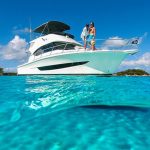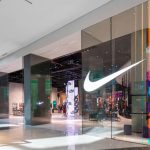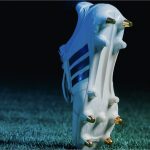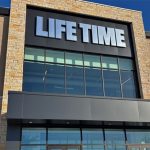Declaring Under Armour a “$10 billion brand that is doing $2 billion of business today,” Kevin Plank on Tuesday expounded on the brand’s growth potential of several key areas women’s, footwear and international that’s expected to propel the company to reach $4 billion in sales by 2016.
The $4 billion target was introduced at its annual Investor Day in June, and would represent a doubling of growth from $1.85 billion in 2012 and $2 billion projected this year.
Speaking at Goldman Sachs Global Retailing Conference, Under Armour’s CEO particularly talked up the opportunity in women’s, which is expected to reach sales close to $1 billion by 2016. That compares to $1.5 billion expected from men's apparel.
Plank noted that UA is the leading men's apparel brand in sporting goods channel, but women’s is likewise “fast closing on the number one women's apparel brand within sporting goods virtually everywhere where we do business.”
Noting that he often gets questioned on whether sporting goods “is an appropriate place to truly become a women's brand,” Plank called out Under Armour’s success with women-focused areas in its core sporting goods channel.
A particular winner has been a new StudioLux shop selling yoga pants and similar gear at the Dick’s SG store in Cranberry, PA. The prototype has seen “terrific results” and is prompting the roll out of 100 more such shops.
Plank said Dick’s SG “has done an unbelievable job of creating an environment there and I believe that we have done a great job with the product assortment to really give the consumer what they want with the needs of the product, but also in a way that they want to receive it. And that is with expanding price points.”
UA will also be testing larger StudioLux’s shops and “going to learn a lot,” Plank added.
The women’s opportunity is also viewable at Under Armour’s first Brand House store, which opened in November outside of Baltimore in Northern Virginia’s Tysons Corner shopping center. The store has overall “performed very well for us,” with 40 percent of the store dedicated to women’s product.
Plank said the store has particularly opened the eyes of its sporting goods partners “because the reaction from our key partners when they have walked in our store in the past is, ‘I never saw you guys like this.’”
At the same time, Planks said the consumer is “taking us to new places,” whether to department store selling floors or to the acceptance of stylish product not expected from UA in its earlier days. Said Plank, “We all have recognized, they may be dressed like they are going to the gym, but you don't always end up at the gym and that is okay, you can still look great.”
He said the company believes “there is a consumer who is looking for us in that capacity,” and also expects to find Under Armour at Nordstrom, Macy’s and “other real boutique-y type shops” in the traditional women’s retailing realm.
Leanne Fremar, formerly of the fashion house Theory, joined the company in June to lead the women’s charge that will be helped by the opening of a New York office in New York City’s garment industry before the end of this year.
UA has expanded over the last several years to about 1,000 department stores. Added Plank, “We are not really fully in men's, women's, kids and footwear in all of them. We are in bits and pieces and so we are trying to round out that assortment, which gives us great opportunity for growth.”
Women’s will also solely be featured in 2014 in a ‘Holiday,’ which are brief major marketing pushes held at certain times of the year. UA began its Holiday efforts with three planned for 2013 to “cut through the noise” of marketing messages in the marketplace. The women’s Holiday effort will “tell the world that we've not only arrived, but probably remind them we have been here for a little bit and we expect to be here for a lot longer,” said Plank.
Overall, UA plans to spend $300 million in marketing in 2014 to support several launches as well as the women’s and footwear platforms, up from $250 million in 2013.
On international expansion, Plank notes that less than 10 percent of UA’s revenues come outside North America currently with the opportunity to have more than half of coming internationally. Said Plank, “We haven't put a timeline on that, but we believe it is a great opportunity, the way we are operating our business and that theme simply says is that to utilize our North American growth engines to help satisfy and reach our global ambition.”
An example of UA’s international potential is Japan, where Dome Corp., its licensing partner, first introduced the brand in 2009 to initial slow growth. Then a “tipping point” came in in 2008, when sales doubled to $72 million from $35 million the prior year. Japan sales were roughly $200 million in 2012, up 30 percent.
The international growth will be supported by hires such as Charlie Maurath, a 20-year veteran who ran the Americas for the Adidas Group, who will particularly be looking to expand Brazil.
In footwear, a breakout hit has been the $130 Highlight cleat that continues to be the number one selling cleat at Eastbay. In running, the SpeedForm has particularly brought “excitement” to UA’s footwear side with a story line about being built in a bra factory and weighing less than 6 ounces. SpeedForm is being featured on the cover to Competitor Magazine’s September issue and being worn by Chris McCormack, a two-time Kona Ironman winner, at the Kona championship this October.
But Plank underscored that much comes back to successful innovation. UA plans to build on its Charged Cotton and Storm platforms from 2011, with the launch of ColdGear Infrared also set for the back half of the year.
More disruptive innovation is being set to drive growth and set UA apart for the years ahead. Plank cited the particular success of the Alter Ego collection, which combines compression gear with Batman, Superman and other superheroes and has faced out-of-stock issues due to robust demand.
He said the Alter Ego launch came as Under Armour’s long dominance in the $25 compression base layer T-shirt was being “challenged by some competitive brands” at $20 price points. As the company watched market share in the category “begin to go in the wrong direction and we watched ASPs for our partners go in the wrong direction,” the launch of Alter Ego, with $45 to $60 price points, has reversed that slide.
Added Plank, “So whether it is creating things like Alter Ego product or new, better technologies or innovations like we are doing with Infrared and really getting behind programs and most importantly getting behind innovation, we have got a pipeline of innovation that is deep and that we look out several years and we feel very good about what is coming.”












